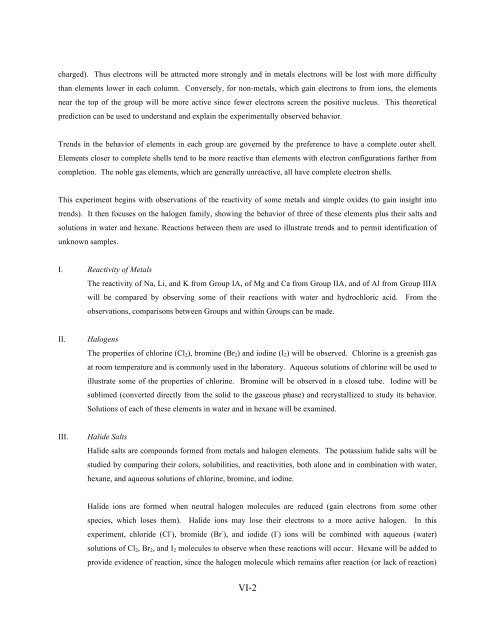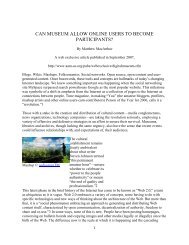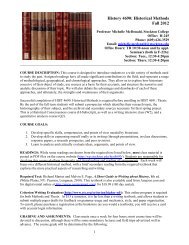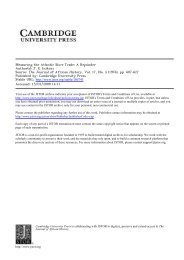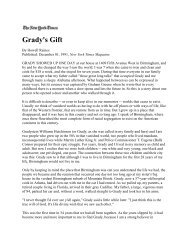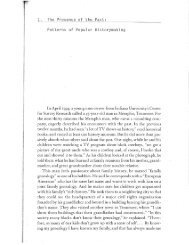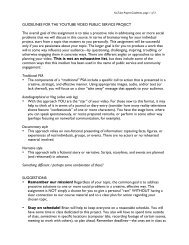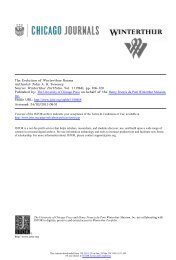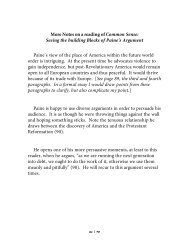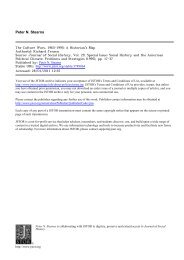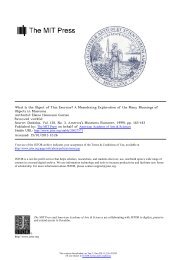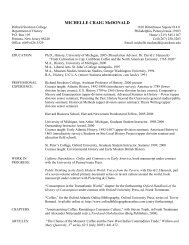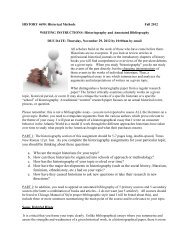VI-1 Chem 2115 Experiment # 6 PERIODIC RELATIONSHIPS
VI-1 Chem 2115 Experiment # 6 PERIODIC RELATIONSHIPS
VI-1 Chem 2115 Experiment # 6 PERIODIC RELATIONSHIPS
Create successful ePaper yourself
Turn your PDF publications into a flip-book with our unique Google optimized e-Paper software.
charged). Thus electrons will be attracted more strongly and in metals electrons will be lost with more difficulty<br />
than elements lower in each column. Conversely, for non-metals, which gain electrons to from ions, the elements<br />
near the top of the group will be more active since fewer electrons screen the positive nucleus. This theoretical<br />
prediction can be used to understand and explain the experimentally observed behavior.<br />
Trends in the behavior of elements in each group are governed by the preference to have a complete outer shell.<br />
Elements closer to complete shells tend to be more reactive than elements with electron configurations farther from<br />
completion. The noble gas elements, which are generally unreactive, all have complete electron shells.<br />
This experiment begins with observations of the reactivity of some metals and simple oxides (to gain insight into<br />
trends). It then focuses on the halogen family, showing the behavior of three of these elements plus their salts and<br />
solutions in water and hexane. Reactions between them are used to illustrate trends and to permit identification of<br />
unknown samples.<br />
I. Reactivity of Metals<br />
The reactivity of Na, Li, and K from Group IA, of Mg and Ca from Group IIA, and of Al from Group IIIA<br />
will be compared by observing some of their reactions with water and hydrochloric acid. From the<br />
observations, comparisons between Groups and within Groups can be made.<br />
II. Halogens<br />
The properties of chlorine (Cl2), bromine (Br2) and iodine (I2) will be observed. Chlorine is a greenish gas<br />
at room temperature and is commonly used in the laboratory. Aqueous solutions of chlorine will be used to<br />
illustrate some of the properties of chlorine. Bromine will be observed in a closed tube. Iodine will be<br />
sublimed (converted directly from the solid to the gaseous phase) and recrystallized to study its behavior.<br />
Solutions of each of these elements in water and in hexane will be examined.<br />
III. Halide Salts<br />
Halide salts are compounds formed from metals and halogen elements. The potassium halide salts will be<br />
studied by comparing their colors, solubilities, and reactivities, both alone and in combination with water,<br />
hexane, and aqueous solutions of chlorine, bromine, and iodine.<br />
Halide ions are formed when neutral halogen molecules are reduced (gain electrons from some other<br />
species, which loses them). Halide ions may lose their electrons to a more active halogen. In this<br />
experiment, chloride (Cl - ), bromide (Br - ), and iodide (I - ) ions will be combined with aqueous (water)<br />
solutions of Cl2, Br2, and I2 molecules to observe when these reactions will occur. Hexane will be added to<br />
provide evidence of reaction, since the halogen molecule which remains after reaction (or lack of reaction)<br />
<strong>VI</strong>-2


